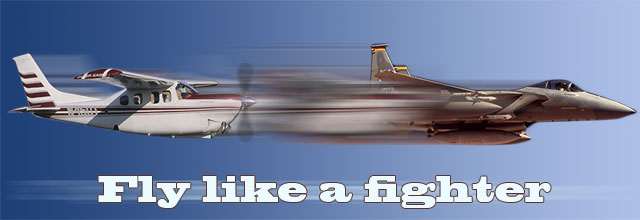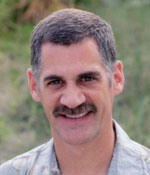
I won the scheduling lottery for a very cool training mission flying the F-15 out of Okinawa, Japan. We would fly eight F-15s to the Philippines, rejoin, then refuel with air refueling tankers, engage an unknown number of Red Air fighters, refuel again, and then return home to Okinawa. If that wasn’t exciting enough, we would fly all the way up to the first contact with the Red Air fighters under radio silence.
 That meant all of our clearances had to be pre-coordinated and we had to run on perfect schedule. Our initial taxi was on the clock. Takeoff clearance was received via a green light from the tower. And we never heard a word—to us—from departure control or center. It was a little bit surreal to be changing radio frequencies but only hearing silence over hundreds of miles of open ocean. Even our inter flight fuel checks were done in close formation with hand signals.
That meant all of our clearances had to be pre-coordinated and we had to run on perfect schedule. Our initial taxi was on the clock. Takeoff clearance was received via a green light from the tower. And we never heard a word—to us—from departure control or center. It was a little bit surreal to be changing radio frequencies but only hearing silence over hundreds of miles of open ocean. Even our inter flight fuel checks were done in close formation with hand signals.
As we approached the air refueling track, we found the four tankers on radar. They were each in one mile trail and 500 feet above the preceding tanker. The first four-ship of F-15s rejoined on the lead tanker, and my four-ship rejoined on the second tanker. Shortly after, eight F-16s silently rejoined on the third and fourth tankers.
Then the fun began.
Each tanker was to play follow-the-leader to maintain the holding pattern. That meant initiating the left turn in holding at the same point in space. When the lead tanker started its left turn, our tanker didn’t fly straight ahead one mile before starting its turn. It only waited a few seconds then started its turn. The No. 3 tanker saw our group turn so it started its left turn almost simultaneously with us. Instead of keeping each five ship (one tanker and four fighters) one mile in trail, we now had fifteen airplanes converging on each other.
We closed to within a quarter mile of the lead group as I saw the third tanker and its four F-16s fly over and in front of us. The 500 feet of vertical separation kept us apart, but 500 feet is too close for comfort. My flight lead finally did the smart thing. He broke radio silence and started directing traffic.
What can we learn from this? First, do you know your light gun signals? In the Air Force, we just carried a printed chart in our In Flight Guide. Next, there are times in our airplanes where radio silence can be nice, but the “Big Sky Theory” and “No News Is Good News Theory” of collision avoidance aren’t always the best plans. Many VFR pilots aren’t in the habit of contacting approach control for traffic advisories, but approach can provide better eyes than you in finding other airplanes. If you are loathe to talk with them, at least monitor their frequency or the tower frequencies that you are flying around to build your situational awareness of other traffic in the area.
Finally, on those long cross country flights where radio silence might equate to boredom, watching movies does not have its place in the cockpit. Instead, listen to your engine(s), monitor your gauges, keep track of your progress, identify suitable alternates along the way, stay updated with the weather, and above all, enjoy the view from your unique place up in the sky. Few people get to experience what we do—we need to appreciate every moment.
Larry Brown of Colorado Springs, Colo., is a retired Air Force F-15 pilot who is using the lessons he learned as a fighter pilot as a GA pilot in his Cessna P210. Brown, who has 2,700 hours total time during his 33 years of flying, also was an instructor pilot and flight examiner in the Air Force T-38 and instructor pilot in the T-52, the military’s version of GA’s Diamond DA40. See previous installments of “Fly like a fighter.”



